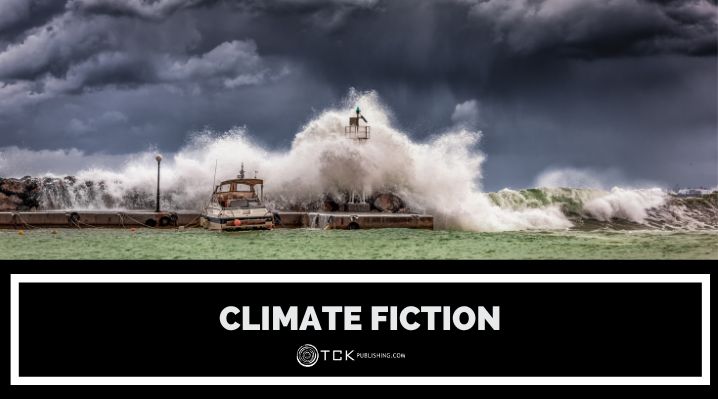
Climate fiction has grown in popularity as the world faces real and rising environmental challenges. Unlike many genres, its message hits harder because the future it imagines feels dangerously close.
If you’re a writer looking to explore real-world issues through fiction, this genre might be exactly what you need.
What Is Climate Fiction?
Climate fiction is storytelling where environmental challenges play a central role. Unlike traditional science fiction, cli-fi stays closer to home—literally. These stories explore how environmental changes affect humans, societies, and ecosystems on Earth.
The term “cli-fi” first gained traction in the early 2000s, but stories about environmental change have existed for decades. Today, this genre stands on its own as a powerful way to help readers visualize and connect with climate issues that often seem too big or distant to grasp.
These stories often take place in the near future or in worlds that have already been shaped by environmental collapse. Some are bleak and dystopian. Others show resilience and hope. Either way, they push readers to think about the choices we make today.
What Makes Climate Fiction Unique?
If you want to write effective climate fiction, understand these key elements that define the genre:
Environmental Crisis as Central Element
Climate issues must be central to your story—not just background setting. The environmental changes should drive the plot forward and directly affect your characters’ lives, choices, and challenges.
Scientific Foundation
Good cli-fi builds on real science. You don’t need a PhD in climatology, but your story should reflect actual climate processes and predictions. This grounding in reality gives your fiction impact and credibility.
Character-Driven Narratives
These stories show how individuals, families, and communities deal with big environmental shifts. Your characters’ responses to environmental challenges—their struggles, adaptations, and transformations—create the emotional core of your story.
Connection with Other Issues
Climate change touches everything—politics, economics, social structures, ethics, and technology. Strong climate fiction leans into these connections, showing how deeply climate impacts every part of life instead of treating it as a standalone issue.
Raising Important Questions
Cli-fi explores ethics, survival, justice, and responsibility. These stories often ask tough questions without offering easy answers. They leave readers thinking about what they should do—and what they would do—in the same situation. More importantly, they spark reflection on what can be done now—before it’s too late.
Examples of Climate Fiction
Looking for inspiration? Here are five great examples from books, film, and TV:
Snowpiercer
An attempt to stop climate change backfires, plunging the world into another ice age. The last of humanity survives aboard a constantly moving train, divided by class and struggling with scarce resources.
Flight Behavior by Barbara Kingsolver
A small-town housewife witnesses a strange migration event caused by climate disruption.
The Ministry for the Future by Kim Stanley Robinson
In response to climate change, the UN forms the Ministry for the Future—a global agency tasked with protecting future generations.
The Overstory by Richard Powers
As deforestation and climate change accelerate, nine strangers find their lives unexpectedly linked by their deep connections to trees—and a shared drive to protect the natural world.
Extrapolations
An anthology series that explores the near future as climate change reshapes every part of life. Each episode follows different characters across the globe as they face rising seas, deadly heatwaves, mass extinctions, and new technologies.
How to Write Climate Fiction
Ready to write your own climate fiction? Here’s how to get started:
Decide the Tone
All cli-fi stories involve a great danger. How do you tackle it? Are you writing a bleak warning or a story of hope? A fast-paced thriller or a slow, thoughtful novel?
Choosing the right tone helps you shape the world and keep readers hooked.
Research With Purpose
Start by reading articles about climate projections for your story’s location and timeframe. Focus on specific changes: rising seas, changing rainfall patterns, extreme weather events, or agricultural impacts. You don’t have to include every climate impact—choose the elements most relevant to your story.
Use current science and trends. The more real your world feels, the stronger the impact. The key is to add enough to be credible without overwhelming your readers.
Create a Believable World
Think through how climate change affects food, housing, work, culture, and relationships. Go beyond the obvious. What does a school look like in a drought-stricken city? What does love look like in a flooded town?
Focus on the Human Side
Write about people who lose their homes, fight to survive, or try to rebuild from scratch. Focus on their daily struggles, relationships, and hopes.
Use diverse perspectives to show how climate change hits people differently—by class, culture, age, or location. Some might resist. Others adapt. A few take bold risks to create change.
Make readers care about the characters first—their fears, flaws, and dreams. Once they’re invested in the people, they’ll care deeply about what’s threatening them: the changing climate.
Craft Plots Beyond Disasters
While storms, floods, and fires create intense moments, the heart of your story lies in how people respond. Go beyond the event itself. Show what happens after the water recedes or the skies clear.
Explore stories about rebuilding, adapting, or resisting. Community organizing, climate migration, scientific breakthroughs, and political clashes can all drive powerful narratives.
The goal is to turn a global issue into something personal. Readers connect with individual struggles, not abstract problems. When climate change threatens a character’s home, family, or future, it stops being distant—it becomes real.
Avoid Preaching
Let your story do the talking. Avoid turning your characters into spokespeople for your message. Instead, show how the world works through their experiences.
Your readers must draw their own conclusions about your message. Otherwise, they’ll shut you off.
Conclusion
Writing climate fiction isn’t just about writing the end of the world. It’s about imagining the world we might face—good or bad—based on the choices we make today.
Your stories will explore possibilities, test human resilience, and help people picture different futures. And while they may center on environmental challenges, they’re ultimately about people. What happens when someone is faced with losing everything? Who do they become when the world changes around them?
Have you written any climate fiction? Share your thoughts below!
If you enjoyed this post, then you might also like:
- 13 Best Climate Fiction Novels to Read Right Now
- The Literary Strange: 10 Lesser-known Genres of Literature
- 8 of the Most Popular Tropes in Dystopian Fiction

Cole is a blog writer and aspiring novelist. He has a degree in Communications and is an advocate of media and information literacy and responsible media practices. Aside from his interest in technology, crafts, and food, he’s also your typical science fiction and fantasy junkie, spending most of his free time reading through an ever-growing to-be-read list. It’s either that or procrastinating over actually writing his book. Wish him luck!
